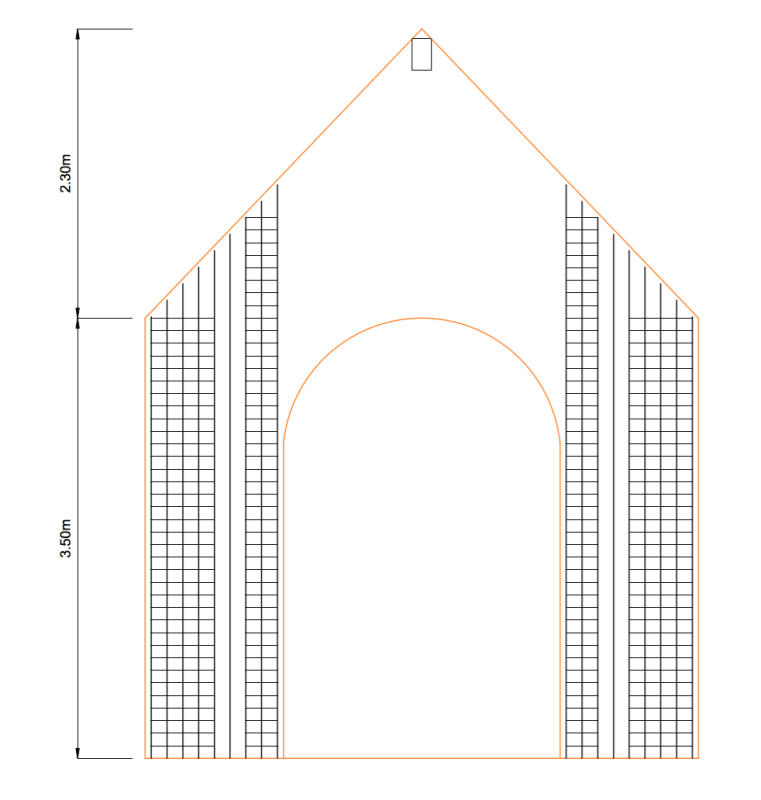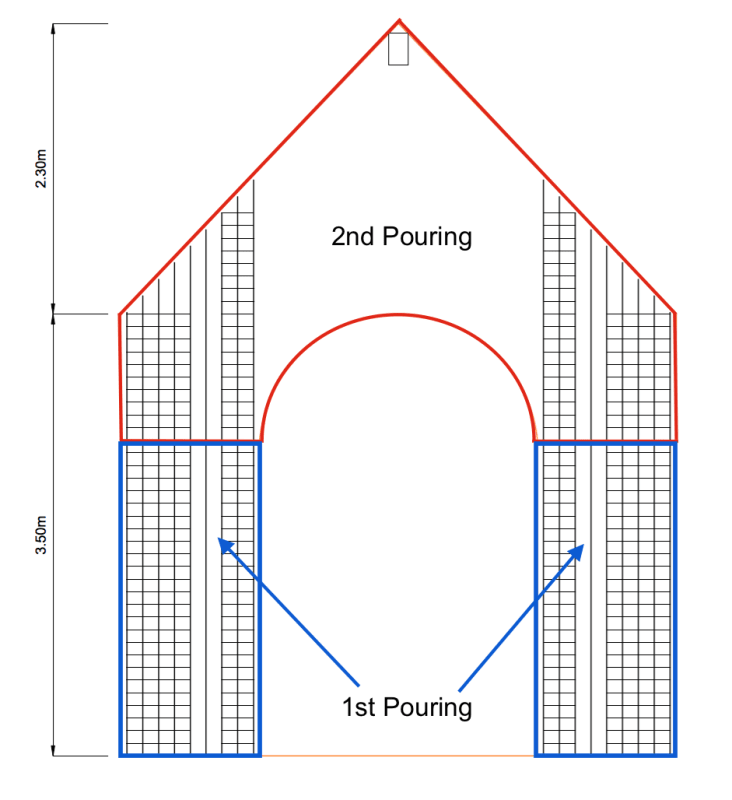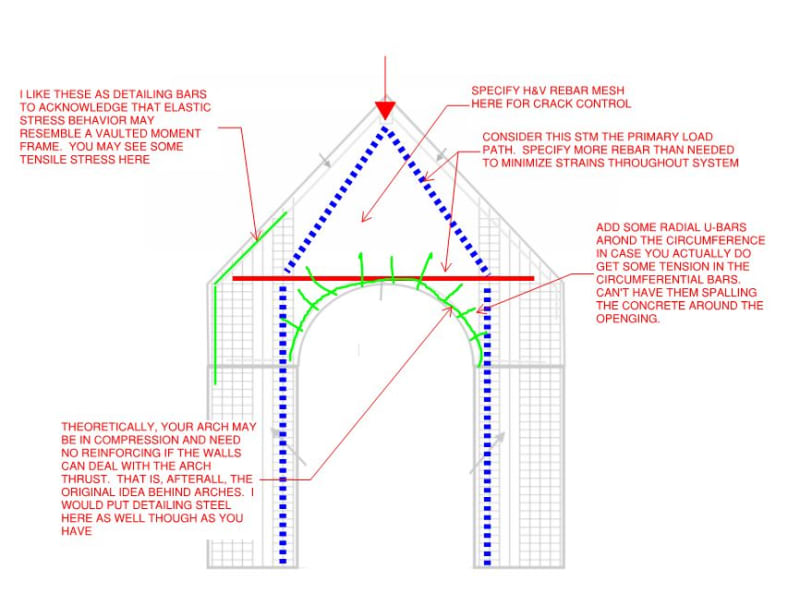kellez
Civil/Environmental
- Nov 5, 2011
- 276
Hey everyone,
I am designing an RC frame church with dimensions:
Length = 7.0m
Width = 4.40m
Height = 5.30m
1. At the front and rear of the building i have cast in situ walls with arch openings. Below you can
see the RC wall at the rear of the church.
2. The drawing below shows the reinforcement of the columns on the the two sides of the wall.
For the reinforcement of the columns I am 100% sure that this is the way to go.
3. Now my main concern is how to arrange the reinforcement 1. around the circular opening and 2. at the top triangular part


These are my initial thoughts:
4. First its important to define the pouring stages, which are shown in the picture below

5. Therefore according to the pouring stages, below i show you how i think i should arrange the
reinforcement around the circular opening (beam 1) and at the top (beam 2 and 3)

Please share any comments you have on what is shown above, regarding the reinforcement, and if you have anything to add please share.
I am designing an RC frame church with dimensions:
Length = 7.0m
Width = 4.40m
Height = 5.30m
1. At the front and rear of the building i have cast in situ walls with arch openings. Below you can
see the RC wall at the rear of the church.
2. The drawing below shows the reinforcement of the columns on the the two sides of the wall.
For the reinforcement of the columns I am 100% sure that this is the way to go.
3. Now my main concern is how to arrange the reinforcement 1. around the circular opening and 2. at the top triangular part


These are my initial thoughts:
4. First its important to define the pouring stages, which are shown in the picture below

5. Therefore according to the pouring stages, below i show you how i think i should arrange the
reinforcement around the circular opening (beam 1) and at the top (beam 2 and 3)

Please share any comments you have on what is shown above, regarding the reinforcement, and if you have anything to add please share.


